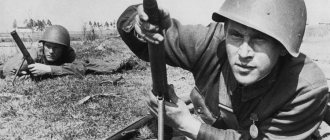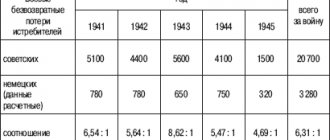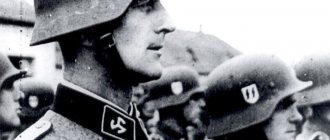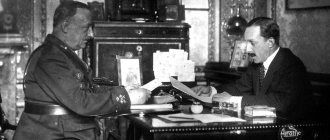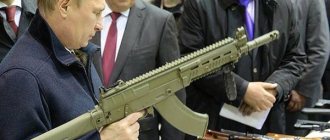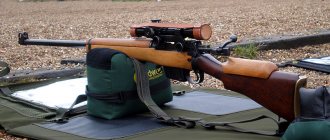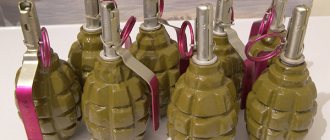Author: zaCCCPanec
January 22, 2022 10:29
Tags: MPL-50 Mads Linnemann pages of history
3190
12
The shovel was invented by man even before the advent of all monotheistic religions; the history of this entrenching tool goes back thousands of years. In ancient times, a tray, bayonet or shovel blade was made from bones or wood, then they began to be sheathed and forged with iron, and only then they came to all-metal versions.
0
See all photos in the gallery
Throughout history, shovels have been used by the military for the construction of fortifications and engineering work, but they became part of the equipment of every military personnel relatively recently, only in the final quarter of the 19th century. The Russian sapper shovel has become one of the most famous and famous throughout the world. Sapper shovel is a colloquialism that has become widespread and is very often used in written and oral speech; the meaning is non-statutory. The official name is small infantry shovel. For a long time, the Linnemann small infantry shovel, also known as MPL-50, was in service with the Russian Imperial Army, and then the Soviet Army.
The father of the small infantry shovel is the Dane Mads Linnemann
0
The father of the small infantry shovel in the form in which it has existed and continues to exist in recent decades is the Danish officer and inventor Mads Linnemann. The Dane received a patent for his invention in 1870. He carried out work on new engineering weapons for servicemen for several years. Thus, Captain Linnemann received the first patent for a universal entrenching tool back in 1869. Initially, the inventor proposed supplying Danish infantry personnel with a tool that combined a shovel, knife, saw and frying pan for cooking. But at that time, the Danish army abandoned the advanced version, preferring a simplified version, adopted for service in 1870 under the designation Den Linnemannske Spade (M.1870). Designers will return to the issue of the versatility of a small infantry shovel again in the 20th century. The invention of the small infantry shovel initially did not bring serious material benefits to Linnemann. The Danish army was small, so there were few orders for the shovel. In an effort to monetize his invention, Linnemann opened the production of similar shovels in Austria-Hungary in 1871, realizing that the Austrian army was much more numerous.
×
0
In the foreground is a soldier of the Russian Imperial Army with a Linnemann shovel.
After success in the armies of Denmark and Austria-Hungary, France, Prussia and Russia became interested in the shovel. At the same time, the Russian Empire recognized Mads Linnemann's copyright for the invention and bought it for 60 thousand rubles, also ordering the production of 30 thousand shovels. At that time, the transaction amount was quite large. From the late 1870s to the present day, the Linnemenn shovel has undergone virtually no changes, only the materials from which the handle and bayonet of the shovel were made have changed. Today, the MPL-50 shovel and its numerous analogues can be easily purchased on the Internet. The famous sapper blade is widespread not only in the countries of the former USSR and Europe, but also overseas. It is often bought by tourists, motorists and ordinary citizens as an entrenching tool for their farmstead, as well as by reenactors.
Folding German shovel.
Klappspaten. Clear, beautiful factory mark with lion logo on the hind legs and year of manufacture: 1940.
Excellent collectible condition.
From army conservation from one of the Eastern European countries, where captured German equipment was supplied in the post-war years.
Factory sharpened shovel.
Working mechanism.
Genuine gray bluing.
Guaranteed authentic wood.
- When unfolded, the length of the folding shovel is 70 cm.
- when traveling - 50 cm.
Shovels in the Wehrmacht. Historical reference:
Wehrmacht soldiers had several different models of shovels (Spaten). In addition, captured samples were also issued to the troops, in particular Polish ones, which differed from German sapper blades only in their pentagonal blade with a rounded end. The engineer's shovel and cover were worn on the belt on the left.
The small ditching tool (kleines Schanzzeug) was a simple shovel with a rectangular steel blade and a short wooden handle, virtually unchanged since the 1880s. and identical to the shovels used in most European armies. The blade of the shovel was painted black (in North Africa, sometimes sand or bronze), the handle was not painted so that the hands would not become blistered, although it was varnished during manufacture. The total length of the blade was slightly more than 50 cm, but there were also specimens of other lengths.
The engineer's paddle case (Taschefur kleines Schanzzeug), sometimes called a "closed-back" case by collectors, consisted of a rear leather paddle and a front leather rim. On the upper edge of the case there were two leather loops into which the waist belt was threaded. The leather retaining strap was sewn to the right edge of the front leather rim, the buckle was sewn to the left edge: when the paddle was inserted into the sheath, the retaining strap was wrapped around the handle just below the blade. There were examples of cases without a leather blade, with the same rim as the front (collectors call such models “open-backed” or “skeletonized”). Until the mid-1930s. the covers were dark brown, but most of the later ones were painted black. From April 1938, most cases were made of faux black leather, but the hinges and retaining strap still had to be made of genuine leather; This condition was also met in relation to the covers of later folding sapper shovels. At the end of the war, cases were made of black or light bronze “press-stoff”, but still with loops and a strap made of genuine leather. There were limited production models of covers for North Africa made of canvas and reed-green braid; their design was almost identical to the model with a “closed back”. The blade of the bayonet scabbard was suspended from a belt between two loops of the blade, and a retaining strap was also wrapped around the scabbard. This is not necessarily done in combat conditions, and the bayonet was often worn on a belt just in front of the shoulder blade.
The Austrian infantry shovel (Spaten fur Infanterie) was used by units of the former Austrian Federal Army, included in the Wehrmacht in 1938. It was the same as the German shovel, and differed from it only in the pentagonal shape of the blade, the lower end of which was slightly rounded. At the end of the light brown leather case there was one narrow leather loop fastened with a buckle using a D-ring, but otherwise the case was identical to its German counterpart and existed in both a “closed back” and an “open” version of the case .
The folding shovel (Klappspaten) was a new model introduced in November 1938, although it only came into widespread use with the outbreak of the war. The purpose of the innovation was to give the infantryman a larger shovel, with an increased handle, but without increasing the overall length of the shovel in the stowed position. It could also be used instead of a pickaxe by attaching the shovel blade at a 90° angle to the handle. When unfolded, the length of the shovel reached 70 cm. When deployed, it was 50 cm. The steel blade was painted black (in North Africa, bronze or sand), the rotary nut was made of phenol plastic and inserted into a steel ring. In 1943, this instrument was copied by the US Army.
Early folding shovel covers (Taschefur Klappspaten) were made of black artificial or natural leather, but later ones were made of light bronze "press-stoff" with a solid rear blade and an outer rim of genuine leather. The spatula was covered with a lid on top and held in place by a wide leather strap, fastened to a hook on a thin transverse strap. The tip of the shovel's leather case was equipped with a metal protector. The late wartime model had a solid back, but instead of a wide outer rim, leather side retention strips were sewn on, and the bottom was open. A thin retaining strap was sewn on top of the narrow cover, which was fastened to a thin transverse strap attached to the leather strips of the cover on both sides of the blade. Both early and late versions of the case had one wide leather belt loop riveted to the back wall of the case. The holding loop for the bayonet sheath was riveted on the lower left side of the rear wall, and the sheath itself was worn on the belt in front of the shoulder blade. The variant of the cover made of tarpaulin and braid is unknown, but its existence cannot be excluded.
MPL or MPL-50
0
The small infantry shovel, also known as MPL-50 or Linnemann shovel, was a portable or transportable entrenching tool for the lower ranks of the army of the Russian Empire, and then for privates and sergeants of the Red Army and the Armed Forces of the USSR. The length of the small infantry shovel was 50 cm, which is reflected in its name. The small infantry shovel is designed for self-digging of soldiers, tearing off a single trench or rifle cell under enemy fire. The sapper blade is the main engineering weapon of a serviceman. Each infantry company of the Russian Imperial Army had 80 small infantry shovels, as well as 20 axes.
0
In addition to its engineering functions, the shovel could be used as a weapon in hand-to-hand combat, as well as for cutting branches and bushes, as a knife or as an oar. Standard dimensions allow you to use a shovel for measurements: two shovel lengths - a meter. The shovel can also be used as a throwing weapon. Videos on the Internet with training of both military personnel and civilians with the MPL-50 traditionally receive many views all over the world.
0
Having been adopted by almost all armies of the world, the small infantry shovel was able to influence the entire art of war. Each fighter on the battlefield received his own engineering weapons - MPL in a fabric case. This allowed the soldier to quickly prepare at least some kind of shelter in the ground to protect himself from enemy fire.
0
Military personnel who have good physical fitness and are trained in the techniques of working with MPL are able to prepare a trench for firing from a prone position in about 8-12 minutes. In accordance with the standards adopted by the Red Army, an infantryman had to dig 1/3 cubic meter in clay soil, 1/2 cubic meter in medium vegetative soil, and 3/4 cubic meter in sandy soil per hour of MPL work. Both lower sides of the MPL steel tray are sharpened, the handle was made from various hardwoods, no paint was applied to the handle. The standard dimensions of the MPL of the Russian Imperial Army and the Red Army were: length of the tray - about 200 mm (in the USSR Armed Forces - about 180 mm), width of the steel tray - about 150 mm, total length of the shovel with handle - 500 mm. The small shovels of the Imperial Army and the Red Army also had ferrules. Post-war MPL-50 shovels did not have a ferrule.
What options for using MPL in combination with other weapons exist?
There are not many options for such combinations, but they exist. The most common combination: gun and spatula, or knife and spatula. Remarque describes hand grenades and a spatula.
Such combinations are determined by functional necessity. For example, assault units first threw hand grenades into sections of the trenches in a certain sequence, and then burst into the trenches and finished off all living things.
If it was necessary to clear a dugout, they first threw a grenade, and then fought with a pistol in one hand and a knife or spatula in the other hand.
Here is an excerpt from Paul Karel’s book “Eastern Front”, book one “Hitler goes to the East”:
“The attackers cleared every meter of the path with shovels. At the same time, at any moment an enemy could appear to the right, left, in front or behind. The situation forced Lüttwitz to develop an original method of warfare. This is how Schaub describes it: “The lead company made its way through the deep snow on both sides of the road to the nearest village and, acting as an assault unit, attacked the enemy in narrow, deep formations. The attack began with concentrated mortar fire. Then the main weapon became hand grenades or, in hand-to-hand combat, an entrenching tool.”
The spatula can be combined with any item that can be used as a weapon. There is also a fighting technique with two shovels at the same time. At seminars I demonstrate the work of a spatula with a tarpaulin cover, or a spatula and a knife, as well as a stick, a jacket, etc.
Why has the MPL become a kind of symbol of a soldier in Russia?
Remember the common poster from the USSR times “A shovel is a soldier’s friend”? So, she really is a friend.
Here, for example, is the recollection of front-line soldier A.D. Volkova:
“But the sapper’s shovel deserves special attention! What is not praised in poems, songs, films with a military theme: tobacco, a glass, mail, etc. It is immediately clear that these singers did not even smell front-line gunpowder. The most worthy of praise is the sapper's shovel! A soldier can throw away a pot, a spoon, even a rifle, the bayonet of which he threw away long ago, but only death will separate him from the spatula. The spatula saves soldiers not only in close combat. After all, this is an ax, a knife, a frying pan and other countless uses...
We must pay tribute: most of the blades are made of good steel. Only those made in a hurry did not have one of the edges of the shovel sharpened at the factory. But the soldier will still imprison himself. And then he sharpens it so that the blade not only chops, but cuts well, and some even shave with it! But you have to fry with it carefully! Don't let her lose her temper. Horse meat needs to be cooked for a very long time, but you can quickly fry it on a shovel. After all, it’s rare to come across telegraph wire to fry kebab on. You could use a bayonet, but it’s thrown away: extra weight... You can talk a lot about the shoulder blade. She should have a monument erected.”
It must be said that the shoulder blade was generally one of the symbols of the First World War. I would like to show a shovel from my collection, where, in memory of the 1914 war, a commemorative engraving was made “In memory of our heroes who died in the trenches.”
Any infantryman of any army knows that this simple tool is truly a friend that will save his life during shelling. So the shoulder blade is really a symbol of a soldier, as important as a machine gun or a rifle. Tags: rich • military • interesting • history • educational • sapper shovel


